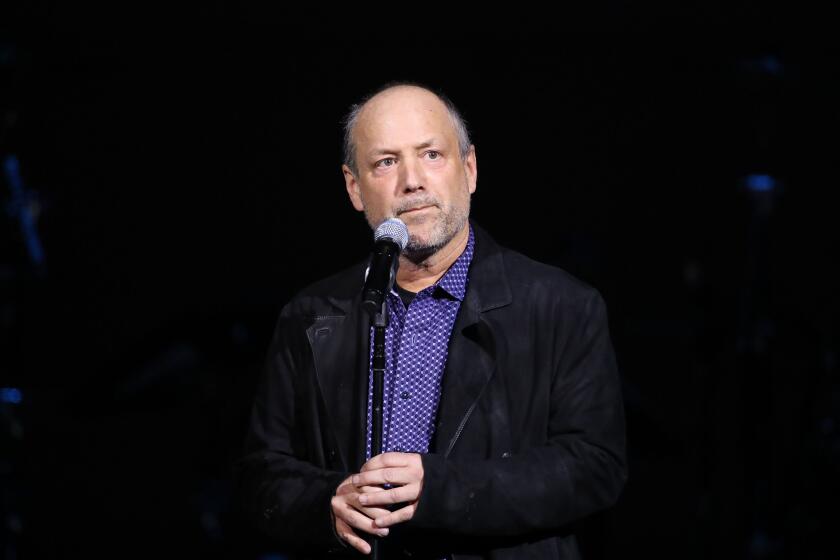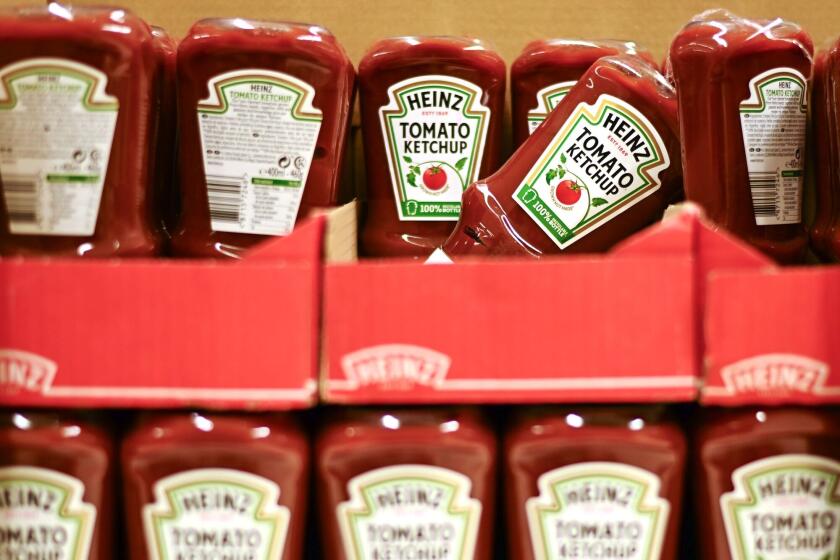Non-alcoholic beer, wine take kick out of drinking
- Share via
Will taking the alcohol buzz out of beer and wine create an entirely new beverage category and quench the thirst created by the nation’s flirtation with moderation?
Or is this latest marketing device yet another fad poised to become a bad memory for new product strategists?
Consensus is difficult to find on the subject. Some food industry analysts following the trend believe that adult beverages without alcohol are an ingenious, and potentially lucrative, opportunity. Others dismiss these imitations as contrived and express wonderment that considerable investments are being channeled into products frequently criticized as lacking flavor and, by some, as being “horrendous.”
“Some of these non-alcoholic beers do not have as good a taste as one would expect and that has hurt their growth,” said Jerry Steinman, publisher of a beer industry newsletter based in West Nyack, N.Y. “For the most part, if a guy wants to drink a beer then he wants one with some alcohol in it and (wants to) enjoy the pleasure of a moderate amount of alcohol.”
San Francisco-based wine industry analyst Jon Fredrikson was also critical of the category and expressed reservations about its future.
“De-alcoholized wines leave a lot to be desired. They don’t have much character and are expensive (when compared to) fruit juices. They do not have a great deal of potential,” he said.
Poor reviews aside, sales of non-alcohol or de-alcoholized beers and wines continue to grow. There are also reports that several additional products are advancing past the development stage and are close to reaching distribution channels.
Despite the rush to meet the barely perceptible demand for the taste of Chardonnays and pilsners without the accompanying kick, there is relatively little statistical information available on these imitations.
Estimates place the number of beers in this category at about a dozen and the wines at just more than half that amount. Distribution is also spotty and few, if any, of these items are available throughout the country.
A U.S. Department of Commerce survey of domestically produced non-alcohol beers shows a 26% jump in production between 1983 and 1984, after several years of decline. The agency reports that 384,360 barrels of these imitation brews were made in 1983 while the figure increased to 484,000 last year.
However, no similar advance is anticipated for 1985 because production figures for the first six months of this year closely parallel 1984’s output. Imports are not included in the Commerce Department’s data, but industry observers feel that the high-priced foreign versions constitute only a small fraction of the market.
Wines sans alcohol also made a major advance between 1983 and 1984 with the introduction of Joseph E. Seagrams & Sons Inc.’s St. Regis Vineyards. The Seagrams’ entry virtually created the category in this country, and now observers place the production of these imitation wines at about 500,000 to 600,000 cases annually, almost all of which is St. Regis.
Although sizable progress has been made, non-alcohol beers and wines are barely a footnote when compared to their more potent counterparts. For instance, last year there were 175.5 million barrels of beer and 580 million gallons of wine produced in this country.
Even so, the emergence of de-alcoholized beers and wines brings to the fore the various nomenclatures assigned to the different brewing and wine-making processes.
If a product is labeled as being de-alcoholized, then the beverage was actually produced with traditional methods and was, during one step along the way, a genuine beer or wine. Then one out of a number of different techniques is used to remove the alcohol. The finished version’s alcohol content must constitute no more than 0.5% of the beverage’s volume.
When the word non-alcoholic is used, then the beverage never actually became beer or wine in the legal sense. The fermentation process under which yeast converts sugar present in the liquids to alcohol is either circumvented or altered. This category can have an alcohol content of no more than 0.01% and is, in essence, alcohol free.
The distinction is important because the de-alcoholization process is costly, and those firms manufacturing products under this method are protective about the technology. Furthermore, there has been misrepresentation in the past, particularly when juices or non-alcohol wines are labeled as de-alcoholized. This type of inaccurate labeling led to federal definitions for the two varieties.
If there’s some confusion over the various labeling terms, then there’s a chorus of differences over who exactly is the target audience for these drinks. While one company will claim recovering alcoholics are its market, another will pursue the holiday or weekend revelers who, at some point, search for alternatives to alcohol beverages.
“We’ve done a lot of research and . . . found that there is a wide range of consumers that have an interest in this product,” said John Yankowski, sales manager for St. Regis Vineyards, which uses a patented technology to de-alcoholize.
Those found to be receptive to St. Regis’ three varietals are health and fitness enthusiasts attracted by the beverage’s low calorie content, patients on medication who are prohibited from drinking alcohol and people attending business meals or parties who want sobriety along with the ambiance of wine.
“People don’t stop drinking because they like St. Regis. Rather they make a decision that they’re stopping (for the evening) because they need to drive or for medical reasons. But once that decision is made then St. Regis is a logical alternative,” Yankowski said.
Beer industry consultant Joseph Owades claims that the reason sales of some de-alcoholized products have remained flat is that not enough money is being spent on advertisements or promotions. Imaginative marketing of the category is also lacking, he said.
“I think these products have enormous potential,” said Owades, who is also director of the Center for Brewing Studies in San Francisco. “There are many times when a beer drinker can not drink beer such as while on the job, in a fast food restaurant or driving. These are the times when you can’t get beer, but would drink something if it tasted like beer.”
However, Owades concedes that before consumers are likely to be ordering de-alcoholized beers with their cheeseburgers and fries there is the matter of solving the flavor problem.
“If you boil (a beer to remove alcohol) then you lose the flavor and if you don’t ferment the beer (as in the alcohol-free version) then you don’t create the (desired) flavor. That is a problem,” he said.
Wine experiences the same shortfalls when de-alcoholized. Even more troubling is that a number of wineries are simply putting grape juice into wine bottles and calling the product alcohol-free, according to Richard Carey, a research enologist at Fresno State University.
Carey said that his laboratory work may develop an improved product that will ultimately lead to more firms entering the category. His project is focusing on extracting the flavor essences of alcohol. These chemical components would then be placed back into the wine after the alcohol is removed.
“I’m pleased that I am developing a (de-alcoholized wine) that cannot be singled out as a sore thumb,” he said when relating that one of his de-alcoholized Gewurztraminers fared well in a recent tasting in which all the other entries contained traditional amounts of alcohol.
In the course of his research, Carey has come to the conclusion that the area has promise, but there is still a long way to go before the public embraces the actual products as much as it apparently likes the concept.
“We are satisfying a need,” he said. “But it’s not like the industry has been approached by a group saying, ‘We need a de-alcoholized wine.’ ”
More to Read
Eat your way across L.A.
Get our weekly Tasting Notes newsletter for reviews, news and more.
You may occasionally receive promotional content from the Los Angeles Times.







